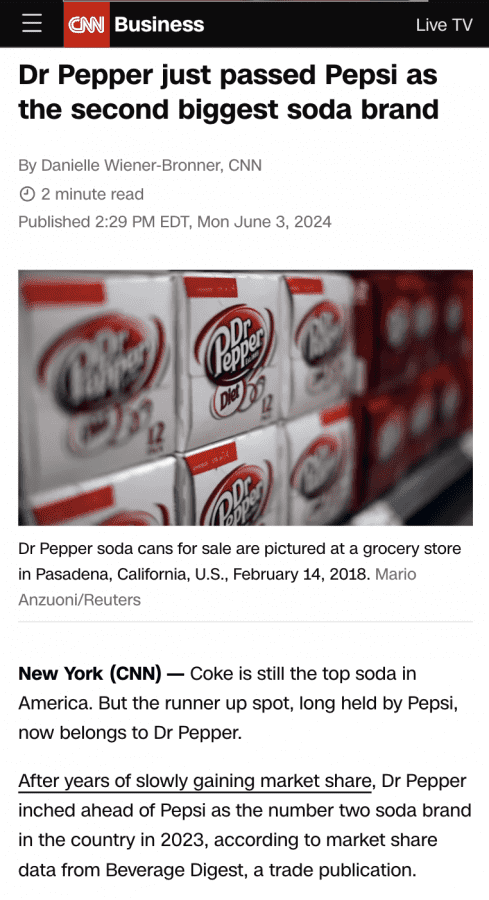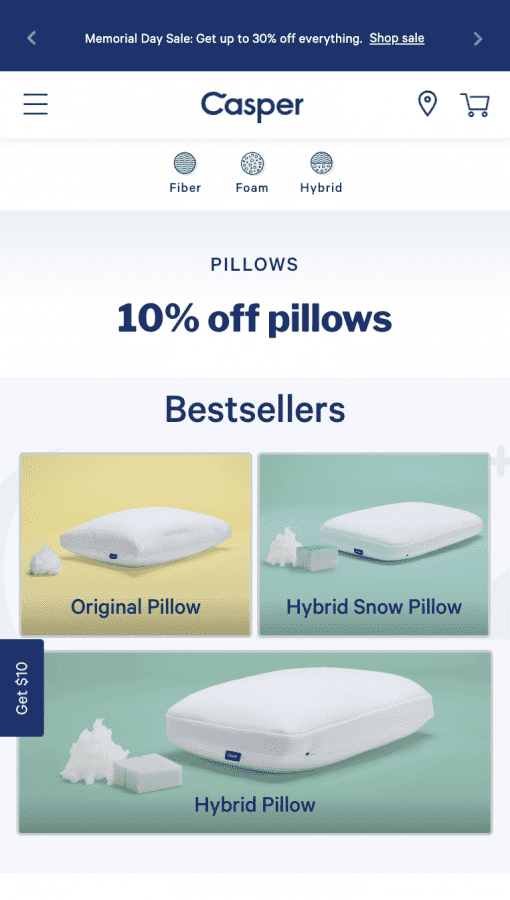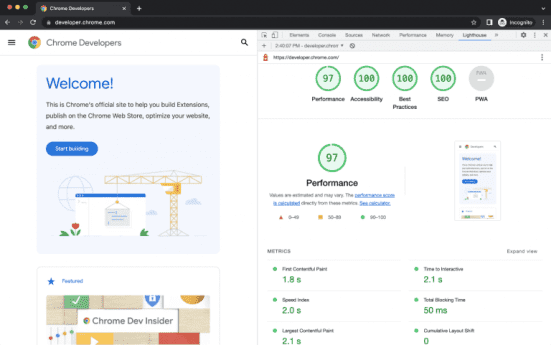A mobile-friendly web site gives the very best person expertise for cell customers. Use these greatest practices to optimize your web site for cell gadgets.
Practically 55% of global website traffic and over 60% of organic search traffic come from cell gadgets.
But 20% of the top-rated brands nonetheless do not need mobile-friendly websites. Even worse: relating to small enterprise websites, solely 9% are optimized for mobile.
A mobile-friendly web site was a handy, aggressive benefit. Now, it’s a necessity if you wish to keep related and aggressive.
Let’s dive into why you want a mobile-friendly web site and tips on how to optimize your web site for cell with insights from our very personal Sam Yadegar, HawkSEM CEO.
Audits assist determine issues or shortcomings with the present model of your web site, together with mobile-friendliness. (Picture: Unsplash)
What’s a mobile-friendly web site?
A mobile-friendly web site features and shows effectively on cell gadgets. Smartphones and tablets have smaller display sizes, so companies must adapt their web site content material and interface so it’s straightforward to learn and navigate on cell.
Greatest practices for a mobile-friendly web site
Now that you realize what a cell web site is, let’s dive into tips on how to optimize your web site for cell gadgets.
Listed below are the perfect practices for constructing a mobile-friendly web site:
- Perform a comprehensive audit
- Choose an ideal mobile-friendly solution
- Optimize website speed
- Compress images & multimedia content
- Optimize page content to fit all device screens
- Code in HTML5
- Avoid pop-ups
- Be strategic about button size and placement
- Use a large, readable font
- Make links easier to tap by spacing them apart
- Use short lead forms
- Test site on mobile devices regularly
1. Carry out a complete audit
Audits assist determine issues or shortcomings with the present model of your web site, together with mobile-friendliness.
You need to use the outcomes to provide you with a plan for optimizing your web site.
An audit can even generate a broad vary of vital and insightful metrics, together with the variety of cell customers visiting your web site.
You need to use Google Analytics to audit your web site by following this command path: Google Analytics > Viewers > Cell > Overview/Units. Google Search Console will notify you of Cell Usability errors, and Google has its personal Mobile-Friendly Test tool as effectively.
Moreover, you possibly can go for premium third-party instruments. Should you don’t have the time or bandwidth to tackle an audit, you possibly can look into partnering with an agency that may advocate personalized options based mostly on the outcomes.
Audit steps embrace:
- Assessment your cell expertise with a tool simulator in your desktop, or simply use your precise telephone.
- Begin with the homepage then transfer to high touchdown pages and observe your web site’s hierarchy and construction.
- Take screenshots and notes of any damaged photographs or hyperlinks, and contemplate the person’s expertise. Can they discover data quick? Is the web page too lengthy? What motion would you like them to tackle this small display?
- Prioritize common fixes, then dig into smaller errors to gauge the extent of the work that must be finished.
When you full the audit, it’s smart to plan on performing common audits at the very least annually. This fashion, you possibly can guarantee every little thing remains to be optimized and working accordingly. Common audits can even be useful relating to maintaining with Google’s dynamic updates.
Professional tip: In Google Analytics, you possibly can view information like bounce charge per gadget class and sort, pages per session, and common session length. These KPIs will let you realize if customers are partaking effectively by way of cell.
2. Select a super mobile-friendly answer
There are 4 major options to select from when making your web site mobile-friendly:
Responsive net design
Responsive web design is the preferred answer, primarily due to comfort.
This design sort entails embedding a code that mechanically adjusts the location’s contents to suit particular person customers’ gadgets. This consists of rearranging content material and resizing fonts to suit small screens.
With cell net design, nothing else modifications, together with the unique URL, and this answer is simple to take care of. Nevertheless, the location’s response could also be considerably restricted in comparison with different options.
Dynamic serving
Dynamic serving includes detecting a person agent (cell, pill, or desktop) and producing a personalized web page with HTML and CSS optimized to be used with that individual gadget.
This answer’s major benefit is you could show heavy content material (similar to movies or high-resolution photographs) in your cell pages. Nevertheless, this answer could be expensive to implement. Moreover, accuracy in detecting the person agent is determined by your answer supplier’s competence and high quality.
Cell model
This answer includes making a separate cell web site with separate content material impartial of the primary desktop web site. Cell customers are mechanically redirected to the cell model utilizing a separate cell area title.
This answer isn’t really helpful a lot anymore, as a separate cell web site is a no-no for mobile-first indexing. One other shortcoming of making a cell model is its restricted content material.
It’s tough to include all content material from the primary desktop web site. Plus, these websites are sometimes tougher to handle in comparison with different options.
App
Relating to selecting an app, the sort is essential. There are net apps that function like common websites to succeed in customers on any gadget by means of their browser.
Nevertheless, you lose the choice to incorporate push notifications, which are sometimes an enormous a part of a enterprise app’s success.
A local or cell app presents a whole lot of advantages, similar to unparalleled person engagement.
Cell apps are additionally wonderful for branding, because the design is personalized particularly for cell customers. And superior algorithms provide customization for particular person customers.
Lastly, you should use gadget options like push notifications, offline shopping, GPS, cameras, and extra.
The draw back: A cell app is usually dearer than different cell options. And more than half of smartphone customers don’t trouble downloading their favourite retailer’s app.
For these causes, cell apps are sometimes used as a complementary answer for these different cell options.
Professional tip: Progressive web apps (PWAs) are a hybrid answer that manages to include all some great benefits of each app sorts with out falling prey to their flaws. They permit customers to navigate to the PWA from their browser like an internet app but additionally put it aside to their gadget like a local cell app.
Making your web site mobile-friendly has gone from a nice-to-have to a essential advertising element. (Picture: Unsplash)
3. Optimize web site pace
The quicker your web site hundreds, the higher expertise you possibly can present for customers of all completely different gadgets. Begin by selecting a internet hosting supplier that’s dependable and quick.
Listed below are some extra methods to enhance cell web site pace:
- Compress photographs and multimedia
- Host any video content material on a third-party platform
- Use a content material supply community (CDN)
- Allow browser caching to retailer bigger recordsdata regionally on the person’s browser
- Determine and get rid of pointless plugins
- Determine and take away pointless JavaScript
- Minify CSS and JavaScript recordsdata
Yadegar additionally recommends eradicating pointless animations, lowering menu gadgets, and lowering content material that isn’t related on cell.
4. Compress photographs & multimedia content material
Cell gadgets have a smaller bandwidth than desktops, which signifies that giant picture recordsdata will take longer to load.
And the longer the web page takes to load, the upper the probabilities of customers leaving the location.
However that doesn’t imply that your cell web site needs to be boring or ugly.
“One of many largest errors I see individuals make relating to making a mobile-friendly web site is dropping all aesthetically pleasing visuals which are on the desktop web site,” says Yadegar.
“You may nonetheless thrive with visuals on cell to maintain customers engaged. Should you’re operating the proper tech stack, it shouldn’t actually hinder web page pace both.”
Compressing photographs lets you reduce the file measurement with out compromising picture high quality. Whenever you do that, the quantity of knowledge that should load for the person to view the multimedia content material is lowered, which will increase the location pace.
Use a instrument like TINYPNG to cut back the file measurement. And ensure you’re utilizing picture codecs like JPEG 2000, AVIF, and WebP, which have a lot quicker load instances than JPEG and PNG.
Nationwide Geographic is a good instance of a web site that makes use of a whole lot of stunning, high-quality photographs with out compromising cell load instances:

5. Optimize web page content material to suit all gadget screens
A mobile-friendly web site will typically have all the identical web page components because the desktop model, besides they’re optimized to suit completely different display sizes.
Right here’s an instance of the desktop model of an article on CNN’s web site:

And right here is the cell model:

Whereas the picture and the textual content are the identical, the scale and placement of the web page components are completely different. The desktop model has navigational hyperlinks on the high (“Markets,” “Tech,” and many others.) Whereas the cell model requires you to click on on the menu button within the high left nook to entry navigational choices.
The desktop model has extra content material and adverts to the proper of the article. And the cell model places these components on the finish of the article in order to not disturb the cell person’s studying expertise.
“Take note of the sizing and positioning of components whereas ensuring they’re responsive in design to accommodate a number of gadget screens,” Yadegar advises.
Determine and contemplate eliminating any photographs, graphics, or animations that is probably not important to the cell model of the location. Be sure that the pictures and textual content you utilize on the web page are straightforward to learn from a cell phone.
Additionally, keep away from utilizing partitions of textual content on net pages. Whereas it might look extra manageable on a bigger desktop display, lengthy blocks of textual content could be tougher to learn and scroll by means of on a cell gadget.
6. Code in HTML5
Adobe Flash is nice for animations. Nevertheless, it’s not supported by cell. As a substitute of Flash, use HTML5.
HTML5 provides builders extra management over their web site efficiency. It permits them to create responsive web sites that may present the identical shopping expertise throughout gadgets.
Simply a number of the advantages of HTML5 embrace cell optimization, quicker web page loading instances, higher multimedia assist, and compatibility throughout browsers.
7. Keep away from pop-ups
Pop-ups could be an effective way to get the customer’s consideration and seize lead info on desktop computer systems. Nevertheless, they don’t work effectively on cell gadgets.
Pop-ups are tougher to view on smaller screens, and customers might by chance click on on them, taking them to a brand new web page. They may also be harder for cell customers to shut as a result of the X is probably not seen on the cell gadget.
It’s greatest to keep away from the usage of pop-ups on cell gadgets altogether. They are often annoying for cell customers to navigate, which may trigger them to depart your web site.
Nevertheless, when you should use pop-ups, ensure they’re straightforward to shut from a smaller gadget display. Or think about using different web site components like a high banner to attract consideration to your calls-to-action (CTAs) as Casper does on its cell web site:

8. Be strategic about button measurement and placement
Buttons which are too small or tough to click on on cell screens will end in potential clients giving up and leaving your web site. If you wish to create a cell responsive web site, it’s worthwhile to be strategic in regards to the button measurement and placement on the web page so customers can simply click on on it.
Most individuals on cell gadgets use their thumbs for scrolling, so buttons ought to be giant sufficient to intentionally click on on with the thumb.
Buttons must also clearly point out the place they lead. Ensure the call-to-action is obvious, and the textual content on the buttons is giant sufficient to learn from a smaller display.
Making buttons stand out on the web page with a CTA that’s straightforward to learn will assist enhance conversions.
Beneath is a good instance from Nike’s cell web site. The button is giant sufficient to click on on with the thumb, and the textual content is giant sufficient to learn on a smaller display measurement.
The colour black makes the button stand out from the white background. And with a CTA like “Store,” it’s clear the place the button will take you.

9. Use a big, readable font
Whereas stylized cursive fonts could also be aesthetically pleasing and might look nice on large laptop computer screens, they are often fairly tough to learn when scaled down on a smaller display.
Plus, utilizing a customized font can immediate web site guests to need to obtain new fonts, which slows down load instances.
As a substitute, select a regular font that’s straightforward to learn at any measurement. Fonts like Arial, Calibri, or Open Sans is probably not as visually interesting as some extra artistic fonts. However they’re straightforward to learn and don’t require any extra downloads.
Take into account font sizes in your web site as effectively. The best font measurement for the primary physique textual content is 16 pixels. Textual content like captions and labels could be 2 pixels smaller than physique textual content.
Professional tip: Completely different fonts could be simpler or tougher to learn at completely different sizes. Take a look at each fonts and sizes by studying the textual content on a cell gadget. Should you discover something tough to decipher, change the font or sizing till it’s straightforward to learn.
10. Make hyperlinks simpler to faucet by spacing them aside
Similar to buttons, it’s worthwhile to ensure any hyperlinks on the web page are straightforward for somebody to click on on from a smaller gadget display. To assist make it simpler for cell customers to click on in your web page hyperlinks, ensure there may be sufficient house in between the hyperlinks.
With sufficient house, you possibly can assist make sure that customers are clicking on the hyperlink they need to as a substitute of by chance clicking on the fallacious URL.
Basically, attempt to solely hyperlink to different mobile-friendly pages. If the web page you hyperlink to isn’t cell responsive, it could negatively impression the person expertise.
11. Use brief lead varieties
Ensure any varieties in your web site are brief. Kinds which are too lengthy are inconvenient on any gadget, however particularly on cell the place it may be tougher to fill out kind fields.
This touchdown web page on Marie Forleo’s cell web site is a superb instance of what a cell kind ought to appear to be. It has simply two fields to fill out. And the CTA button to submit the shape is giant and clearly states what occurs subsequent.

12. Take a look at web site on cell gadgets usually
Take a look at your web site usually to verify it continues to work effectively on cell gadgets. Open and navigate the location on each Android and iOS gadgets to check the person expertise.
Google presents a free instrument known as Lighthouse that you should use to audit cell efficiency. Entry Lighthouse in Chrome DevTools, and run an audit to get a cell efficiency report.

Why having a cell responsive web site issues
Since cell now surpasses desktop in international web utilization, it ought to come as no shock that search engine big Google has prioritized the cell person expertise.
With mobile-first indexing, Google’s net crawlers prioritize indexing the cell model of your web site over the desktop model. And this has a big impression on search engine marketing (search engine marketing).
In different phrases, in case your web site isn’t optimized for cell gadgets, this could negatively impression your search rankings.
Past search engine marketing, having a cell responsive web site is vital for the person expertise. Companies need their web site customers to have the ability to discover the knowledge they’re searching for and take motion.
In case your web site takes too lengthy to load or is tough to learn on a smaller gadget display, guests will navigate away out of your web site. (And will even go to a competitor!)
The takeaway
Making your web site mobile-friendly has gone from nice-to-have to vital in your advertising.
Between mobile-first indexing and nearly all of searches taking place by way of smartphones, those that present a sub-par cell person expertise merely received’t see the success of web sites that do. All of the extra cause to take the time to verify your web site is mobile-friendly – sooner reasonably than later.
Need assistance ensuring your web site is optimized for cell? Reach out to our group.
This text has been up to date and was initially revealed in August 2020.

